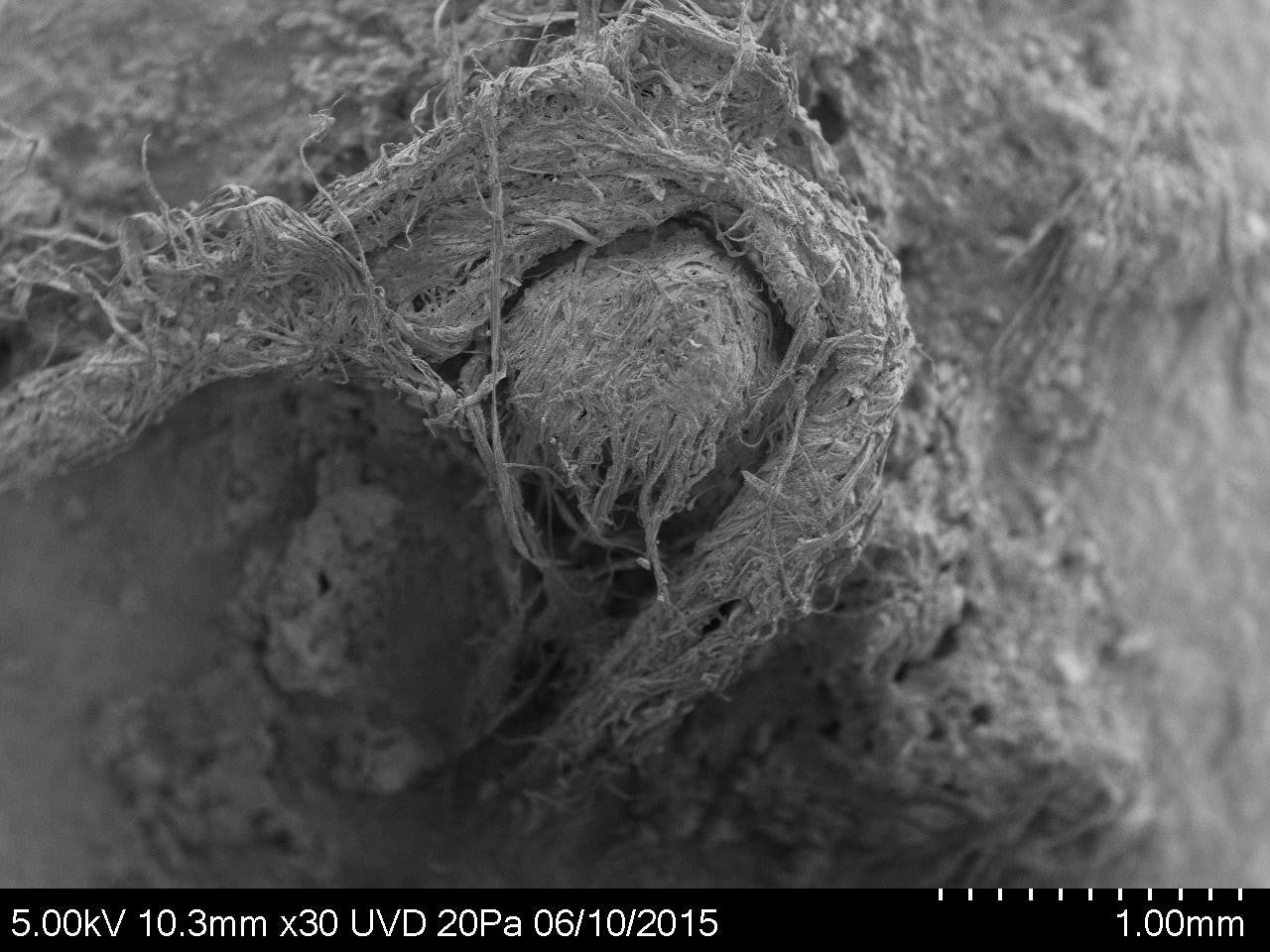Fibers twisted together to form string might not sound like bleeding-edge technology. But with string, or cordage, one can make bags, nets, rope and clothing. We use it to lace our shoes, floss our teeth, suspend bridges, transmit electrical power–the list goes on and on. Naturally, archaeologists have been eager to trace the origins of this pivotal innovation. But doing so is a difficult business because ancient string was made from perishable materials that have mostly been lost to time.
Now archaeologists who have been excavating a rock shelter in France have recovered a fragment of string that could push back the known record of this technology by tens of thousands of years. What is more, the artifact appears to be the handiwork of Neandertals, adding to mounting evidence that our extinct cousins were cleverer than they have been given credit for.
Until recently, the oldest direct evidence of string technology came from a site called Ohalo II in Israel and the famed Lascaux Cave in France. The bits of preserved string found at these sites date to 19,000 and 17,000 years ago, respectively, and were made by early members of our own species. But there were hints that fiber technology might have deeper roots in Homo sapiens culture. Impressions of woven fabric have been found on fired clay from sites in Moravia dating back as far as 28,000 years ago. And ivory artifacts from sites in Germany that may have been used for spinning plant fibers are up to 40,000 years old.
In 2013 archaeologist Bruce Hardy of Kenyon College and his colleagues reported that they had found plant fibers that looked as though they had been twisted to form string in excavations at the Abri du Maras rock shelter in southeastern France, which once harbored Neandertals. But with only individual fibers to go on, as opposed to actual string showing them twisted together, the case was far from airtight.

In the new study, published today in Scientific Reports, Hardy and his co-authors describe a 6.2-millimeter-long fragment of string that their team found at the same rock shelter –in a layer dated to between 52,000 and 41,000 years ago, when Neandertals occupied the site. Analyses of the fragment show that it is made of fibers that were probably harvested from the inner bark of a conifer tree. The fibers were twisted clockwise to form yarn, and then three lengths of the yarn were twisted in the opposite direction to make string.
Exactly what the string was used for is uncertain. But it was found adhering to a sharp-edged stone flake, leading the authors to suggest that it might have been applied to attach the flake to a handle of some sort. Alternatively, they suppose, the string might have had nothing to do with the stone flake and instead have been part of a net or bag.
Specific usage aside, the manufacture of the string attests to cognitive sophistication in Neandertals, Hardy and his colleagues contend. Harvesting the fibers would have required intimate knowledge of the growth and seasonality of the trees. And producing string after one has the raw material is itself mentally demanding, requiring the maker to keep track of multiple, sequential operations at the same time. Considering these findings, along with discoveries of different advanced technologies and even art at other Neandertal sites, “it is difficult to see how we can regard [Neandertals] as anything other than the cognitive equals of modern humans,” Hardy and his co-authors write.
Outside researchers are intrigued by the new work. “I’m not 100 percent convinced” that the find is, in fact, a piece of string, says archaeologist Marie Soressi of Leiden University in the Netherlands, noting that she finds the photographs that accompany the team’s paper “difficult to understand.” But the new work constitutes “by far the best evidence” that the Neandertals at Abri du Maras made string, she says.
In Soressi’s view, the most exciting aspect of the study is not what it demonstrates about Neandertals’ sophistication–we already know their technology was very complex, she observes–but instead what it reveals about preservation. The previous record holder for the oldest known string remains came from a site that had been exposed to groundwater for a long time. Such waterlogged sites tend to preserve perishable materials, such as plant fibers, quite well. The new work by Hardy and his colleagues “supports the idea that microscopic residues of strings are preserved in nonwaterlogged rock-shelter deposits of Neandertal age,” Soressi observes. Perishable objects account for much of the material culture of humans. Yet most of what archaeologists know about prehistoric humans, including the Neandertals, comes from the durable bones and stone tools they left behind. The ability to recover traces of the perishable materials our ancient predecessors used stands to reveal their lives in a whole new light.




Comments